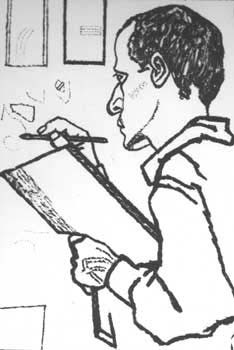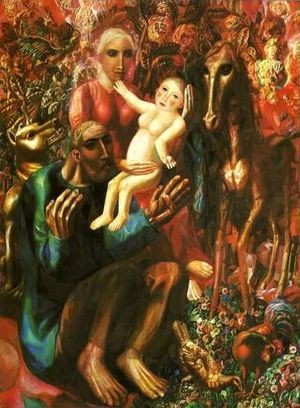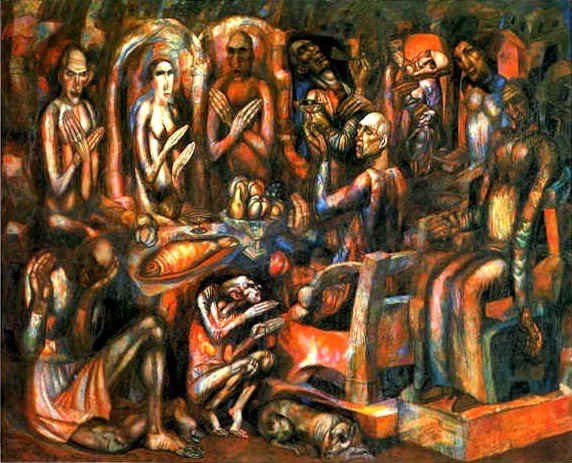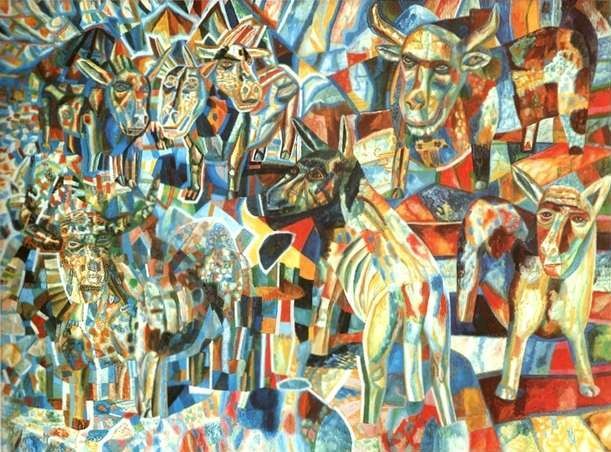Pavel Filonov (Павел Николаевич Филонов) (1883-1941)
Get a Filonov Certificate of Authenticity for your painting (COA) for your Filonov drawing.
For all your Filonov artworks you need a Certificate of Authenticity (COA) in order to sell, to insure or to donate for a tax deduction.
Getting a Filonov Certificate of Authenticity (COA) is easy. Just send us photos and dimensions and tell us what you know about the origin or history of your Filonov painting or drawing.
If you want to sell your Filonov painting or drawing use our selling services. We offer Filonov selling help, selling advice, private treaty sales and full brokerage.
We have been authenticating Filonov and issuing certificates of authenticity since 2002. We are recognized Filonov experts and Filonov certified appraisers. We issue COAs and appraisals for all Filonov artworks.
Our Filonov paintings and drawings authentications are accepted and respected worldwide.
Each COA is backed by in-depth research and analysis authentication reports.
The Filonov certificates of authenticity we issue are based on solid, reliable and fully referenced art investigations, authentication research, analytical work and forensic studies.
We are available to examine your Filonov painting or drawing anywhere in the world.
You will generally receive your certificates of authenticity and authentication report within two weeks. Some complicated cases with difficult to research Filonov paintings or drawings take longer.
Our clients include Filonov collectors, investors, tax authorities, insurance adjusters, appraisers, valuers, auctioneers, Federal agencies and many law firms.
We perform Pavel Filonov art authentication, appraisal, certificates of authenticity (COA), analysis, research, scientific tests, full art authentications. We will help you sell your Pavel Filonov or we will sell it for you.

Filonov was born in Moscow on January 8, 1883 (Gregorian calendar) or December 27, 1882 (Julian calendar). In 1897, he moved to St. Petersburg where he took art lessons. In 1908, he entered St. Petersburg Academy of Arts, from which he was expelled in 1910.In 1910-1914, he took part in the arts group Soyuz Molodyozhi created by artists Elena Guro and Mikhail Matyushin. In 1912, he wrote the article The Canon and the Law, in which he formulated the principles of analytical realism, or “anti-Cubism”. According to Filonov, Cubism represents objects using elements of their surface geometry but “analytical realists” should represent objects using elements of their inner soul. He was faithful to these principles for the remainder of his life.

During the years 1913 to 1915, Filonov was close to Vladimir Mayakovsky, Velimir Khlebnikov, and other futurists. In the autumn of 1916, he enlisted for service in World War I and served on the Romanian front. Filonov participated actively in the Russian Revolution of 1917 and served as the Chairman of the Revolutionary War Committee of Dunay region.

In 1919, he exhibited in the First Free Exhibit of Artists of All Trends at the Hermitage. In 1923, he became a professor of St. Petersburg Academy of Arts and a member of the Institute for Artistic Culture (INKhUK). He organized a large arts school of Masters of Analytical Realism (over seventy artists). Their work influenced suprematism and expressionism.

In 1929, a large retrospective exhibition of Filonov art was planned at the Russian Museum; however, the Soviet government forbade the exhibition from going forward. From 1932 onward, Filonov literally starved but still refused to sell his works to private collectors. He wanted to give all his works to the Russian Museum as a gift so as to start a Museum of Analytical Realism. He died of starvation on December 3, 1941 during the Siege of Leningrad.

Under the umbrella of Universal Flowering, Filonov put forth a manner of working that proceeded from the particular to the general. He believed that objects and fields should be built up from small details and bits and stated that doing it the other-way-round was nothing short of “charlatanism”. To this end, he worked, and required his students to work, with very small brushes in painting and the finest of points when drawing. Most of Filonov’s works were saved by his sister Yevdokiya Nikolayevna Glebova. She stored the paintings in the Russian Museum’s archives and eventually donated them as a gift. Exhibitions of Filonov’s work were forbidden. In 1967, an exhibition of Filonov’s works in Novosibirsk was permitted. In 1988, his work was allowed in the Russian Museum. In 1989 and 1990, the first international exhibition of Filonov’s work was held in Paris.

During the period of half-legal status of Filonov’s works it was seemingly easy to steal them; however, there was a legend that Filonov’s ghost protected his art and anybody trying to steal his paintings or to smuggle them abroad would soon die, become paralyzed, or have a similar misfortune. Still wondering about an early 20th century Russian painting in your family collection? Contact us…it could be by Pavel Filonov.
Reviews
1,217 global ratings
5 Star
4 Star
3 Star
2 Star
1 Star
Your evaluation is very important to us. Thank you.
